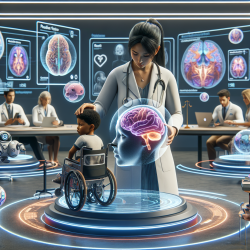The article "World-Renowned 'Swiss' Pediatricians, Their Syndromes, and Matching Imaging Findings: A Historical Perspective" provides a comprehensive overview of several rare pediatric syndromes identified by Swiss physicians. Understanding these syndromes and their associated imaging findings can significantly enhance the diagnostic and therapeutic skills of practitioners working with children.
Zellweger Syndrome
Zellweger syndrome, also known as cerebro-hepato-renal syndrome, is a rare genetic disorder resulting from mutations in the PEX genes. Characteristic physical features include an abnormal face, hepatomegaly, and eye abnormalities. MRI findings typically show deficient white matter myelination and neuronal migration defects. Early diagnosis through fetal MRI can help in prenatal management and parental counseling.
Kartagener Syndrome
Kartagener syndrome is an autosomal recessive disorder characterized by situs inversus, chronic sinusitis, and bronchiectasis. High-resolution chest CT can identify the hallmark signet ring appearance of bronchiectasis, aiding in early diagnosis and management. Recognizing the imaging findings can help practitioners provide timely interventions to prevent complications.
Prader-Willi Syndrome
Prader-Willi syndrome is a genetic disorder caused by a partial deletion of chromosome 15. Early features include severe hypotonia and feeding difficulties, followed by excessive eating and obesity. MRI can reveal structural brain alterations, including a malformed sella turcica. Understanding these imaging findings can aid in the early diagnosis and management of endocrine and neuropsychiatric issues associated with the syndrome.
Schinzel-Giedion Syndrome
Schinzel-Giedion syndrome is caused by mutations in the SETBP1 gene, leading to severe neurodevelopmental delays and seizures. Imaging findings may include hypertelorism, a steep skull base, and congenital hydronephrosis. Recognizing these features on prenatal ultrasound or fetal MRI can facilitate early diagnosis and intervention.
Fanconi Anemia
Fanconi anemia is a rare inherited disease characterized by bone marrow failure and multiple physical abnormalities. Imaging can assist in identifying congenital brain abnormalities, such as a hypoplastic pituitary gland. Early recognition through imaging can guide clinical decisions and improve patient outcomes.
Joubert-Boltshauser Syndrome
Joubert syndrome is a genetic disorder characterized by the absence or insufficient growth of the cerebellar vermis. The "molar tooth sign" on axial MR imaging is a key diagnostic feature. Early identification through neuroimaging can guide therapeutic interventions, including speech and occupational therapy.
Poretti-Boltshauser Syndrome
Poretti-Boltshauser syndrome is caused by mutations in the LAMA1 gene, leading to cerebellar cysts and intellectual disability. Imaging findings include cortical and subcortical cysts in the cerebellum. Recognizing these features can aid in early diagnosis and tailored therapeutic interventions.
Langer-Giedion Syndrome
Langer-Giedion syndrome, also known as trichorhinophalangeal syndrome type II, is characterized by skeletal abnormalities and facial malformations. Radiographic imaging can reveal cone-shaped epiphyses and numerous cartilaginous exostoses. Early diagnosis through imaging can guide orthopedic management and improve patient outcomes.
Conclusion
Understanding the historical context and imaging findings of these rare pediatric syndromes can significantly enhance the diagnostic and therapeutic skills of practitioners. Familiarity with these syndromes allows for early diagnosis and intervention, ultimately improving patient outcomes.To read the original research paper, please follow this link:
World-Renowned “Swiss” Pediatricians, Their Syndromes, and Matching Imaging Findings: A Historical Perspective.
